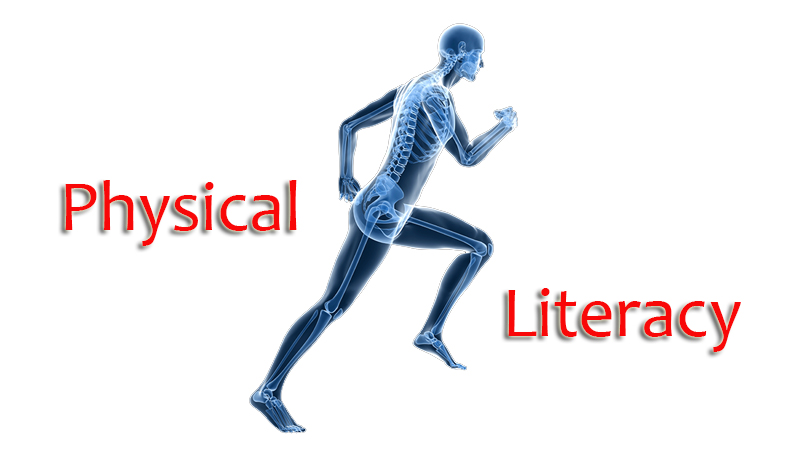By Brett Klika CSCS
We start with letters.
We learn that each letter had a sound.
These sounds can be put together in to words.
Words can then be put together into phrases, paragraphs, stories, and novels.
Pretty soon, we’re reading.
Literacy is developed by breaking down complex arrangements of words into their fundamental pieces.
Much like the learning of sounds, words, sentences and paragraphs allows us to develop the ability to read, learning to interpret feedback from the physical world allows us to develop a “vocabulary” of movement. In turn, we become physically literate.
Physical literacy can be developed in much the same way as the skills of reading. When we understand the foundations of physical literacy and are able to develop and link them together, we create a lifelong story of physical activity.
Through our experience and research at SPIDERfit, we have identified 3 foundational motor abilities that set the stage for the development of lifelong physical literacy. These abilities emerge through the natural development process, but when young children have ample opportunity to interact physically with their environment, they flourish.
These foundational motor abilities are:
1. Postural stability and mobility
2. Perceptual motor abilities
3. Base strength and power
Postural stability and mobility
 There are two primary aspects of postural stability and mobility.
There are two primary aspects of postural stability and mobility.
One aspect is the ability to coordinate body control to keep the body upright. In other words, maintain balance. This is developed through gaining sensory awareness and strength through exploration at a young age in addition to both static and dynamic balance activities as a child gets older.
The other aspect of stability and mobility is the ability for each joint to achieve its proper, natural range of motion. Mobility allows a joint to move. Stability prevents a joint from moving outside of its natural range of motion. Babies are born with optimal mobility, but very little stability.
At a young age, this is developed through crawling, rolling, climbing, reaching, and reacting to a physically engaging environment. As a child ages, this is developed and maintained much the same way, but more specialized means of increasing joint range of motion and stability can be employed.
Perceptual motor skills
Perceptual motor skills involve the ability to interpret sensory information and provide the appropriate action or reaction.
These skills form the foundations of overall coordination and consist of:
• Body awareness refers to the understanding of what the various parts of the body are, and what they can do.
• Directional awareness refers to the level of a child’s body awareness as he or she moves in multiple planes through space.
• Spatial awareness refers to a child’s ability to understand how their body is oriented in space and the amount of space it occupies.
• Temporal awareness refers to the development of internal timing. When temporal awareness is well developed, children are able to properly sequence and synchronize movements with a sense of rhythm.
• Visual awareness is the most basic sense utilized in postural control and begins in infancy.
• Tactile awareness refers to the sense of touch. In any situation involving contact such as in contact sports or dance, every part of the body can be used to sense the amount and rate of pressure.
• Proprioceptive (kinesthetic) awareness refers to the sensors embedded in the muscles, joints, ligaments, and tendons that give feedback to the body about the position of the joints in space and in relation to each other.
At all ages, these awareness skills are developed through high levels of active engagement with an environment that requires reaction, balance, touch, feel, visual and auditory acuity, and movement.
Base functional strength and power
Base functional strength and power refers to the ability to create the muscular force necessary to move the body appropriately to overcome an internal or external load. Base functional power refers to the ability to all of the above ballistically.
In addition to the other foundational motor abilities, base functional strength and power is necessary to allow for effective, efficient movement at any age.
At young ages, particularly through puberty, strength and power are developed as largely as a product of increased coordination. The more the muscles create a force to overcome an internal or external force, the better they get at doing it. As a child reaches puberty and beyond, hormones help strength and power develop by increasing muscular size and density. Activities involving the proper internal and external loads are necessary to maintain and continue the development of strength and power throughout life.
When these foundational motor abilities are honed and developed, it provides a tremendous movement vocabulary from which lifelong fitness and sports activities stem.
As with developing the ability to read, developing physical literacy creates a path for a lifetime of physical activity, health, and happiness.
Brett Klika CEO and co-founder of SPIDERfit is an international award- winning certified strength and conditioning coach, author, and motivational speaker with over 20 years experience motivating and inspiring youngsters to a life of health, fitness, and performance.
Brett consults with schools, athletic organizations, fitness professionals, and fortune 500 companies around the world.






Connect with SPIDERfit!